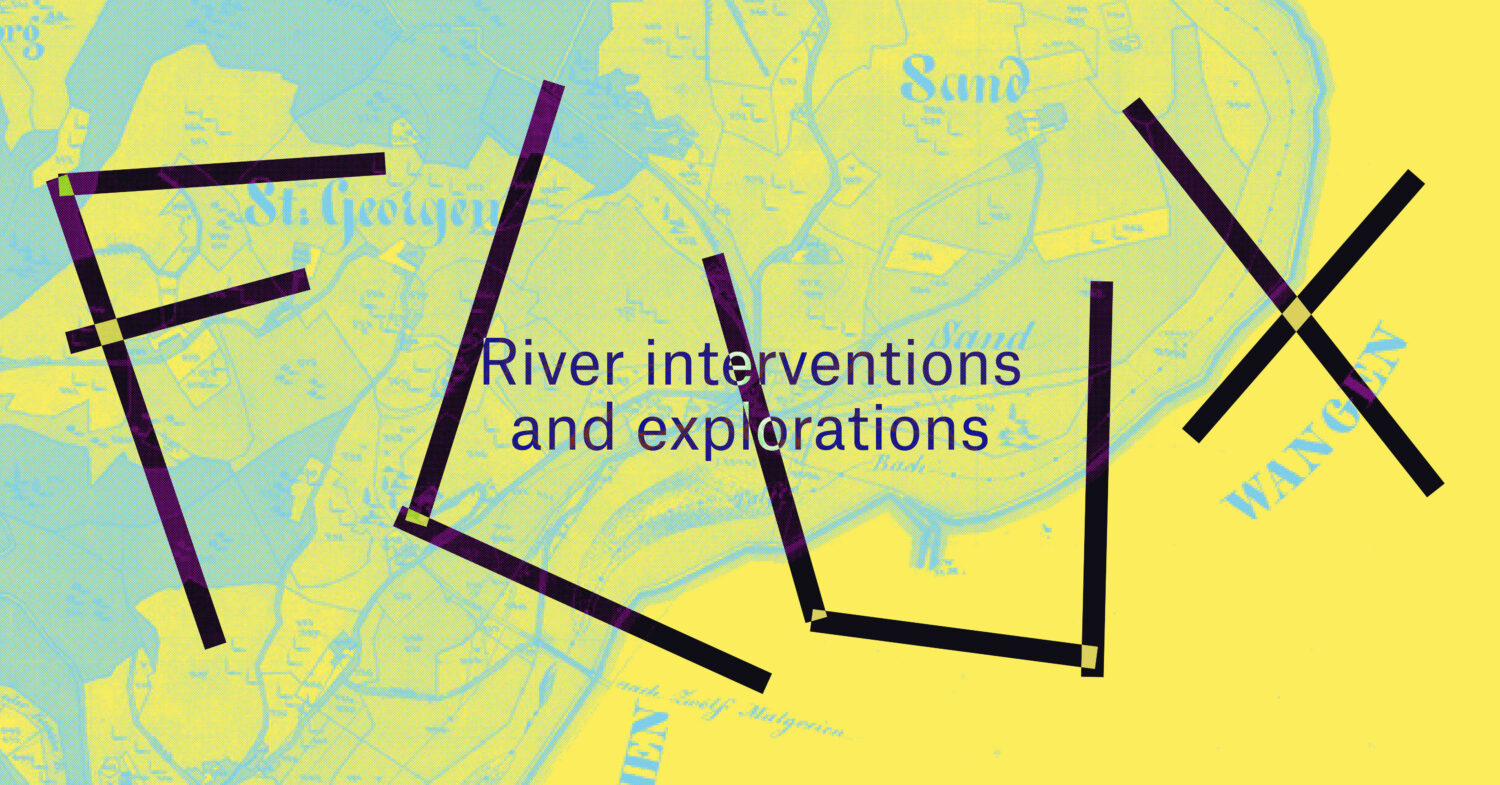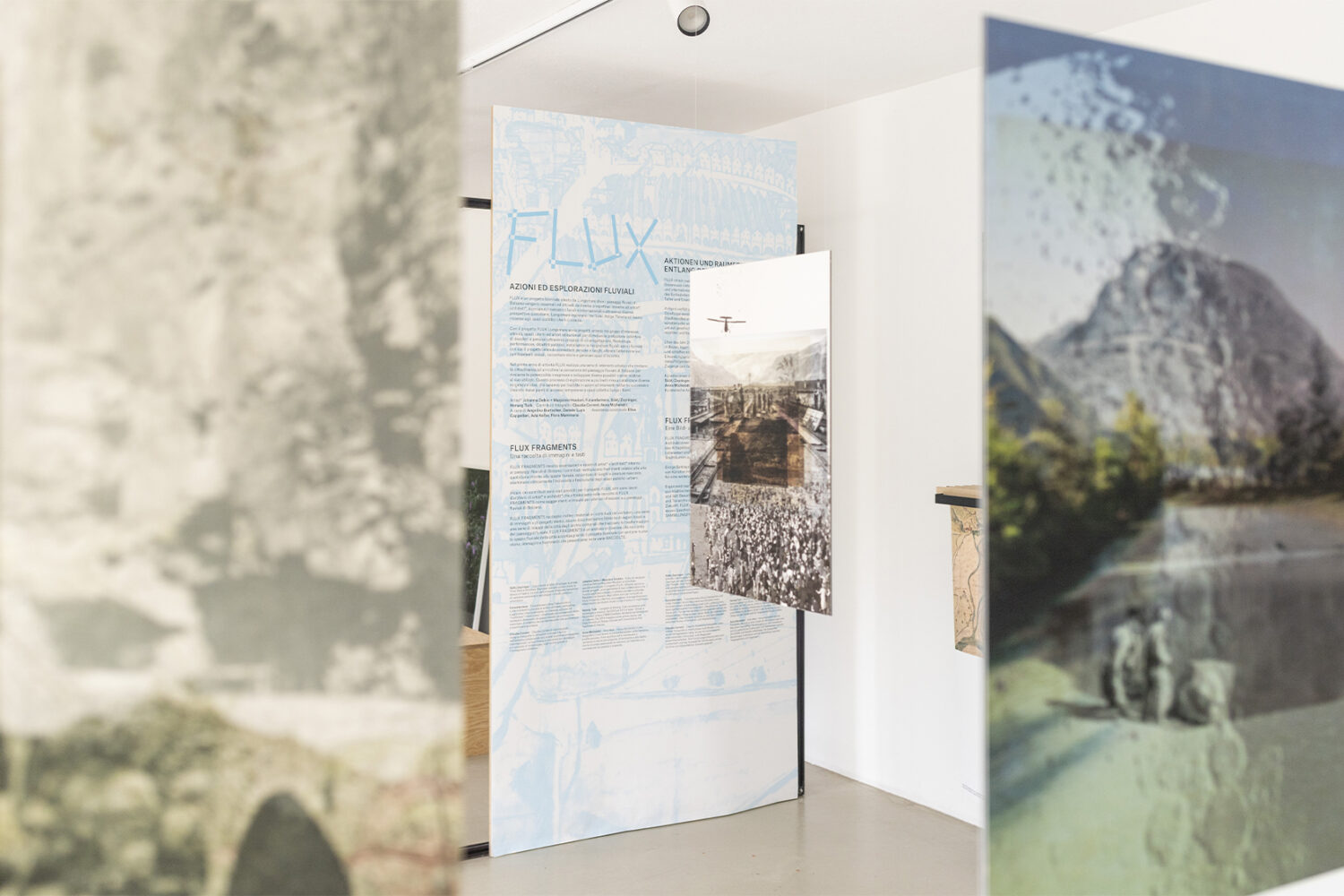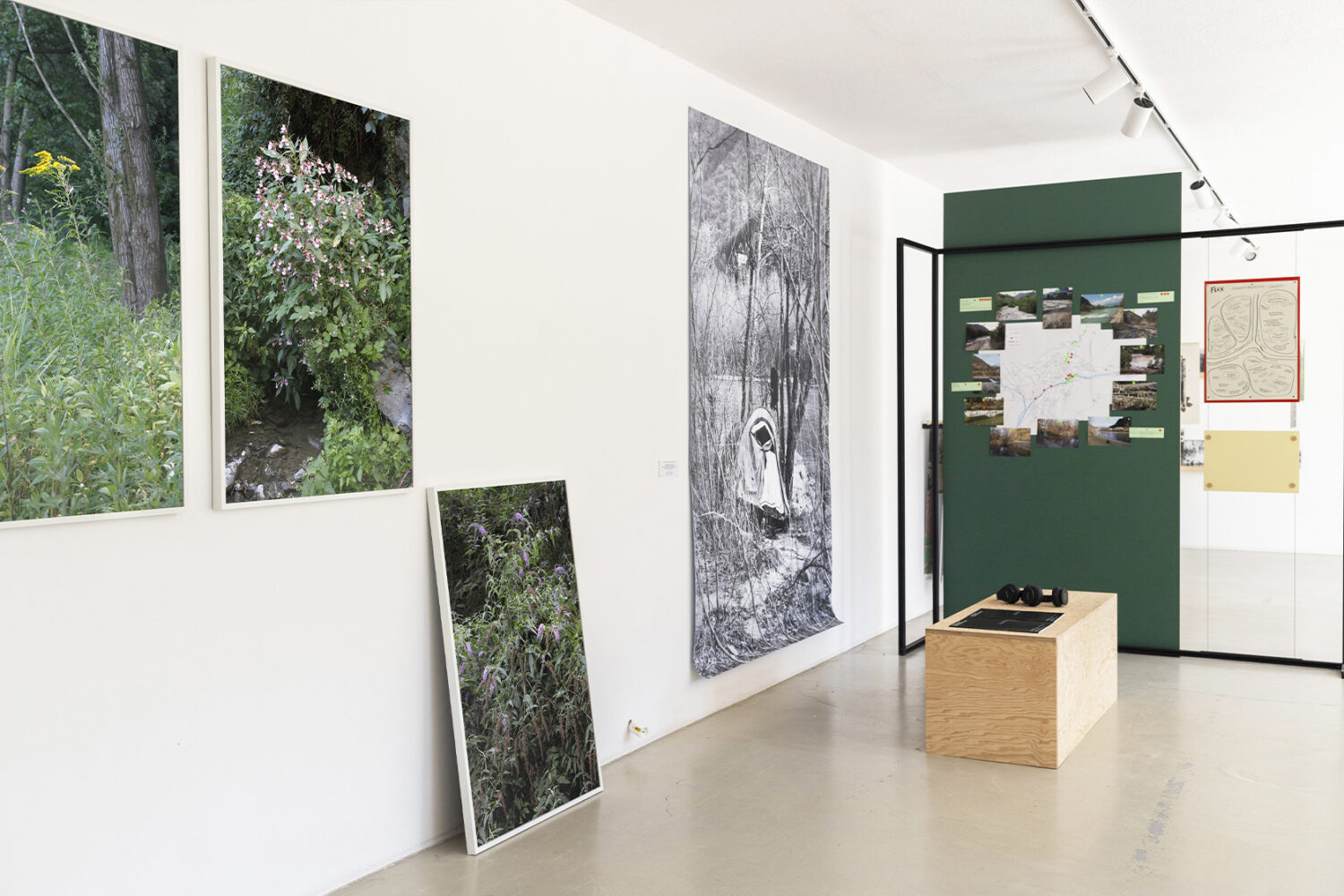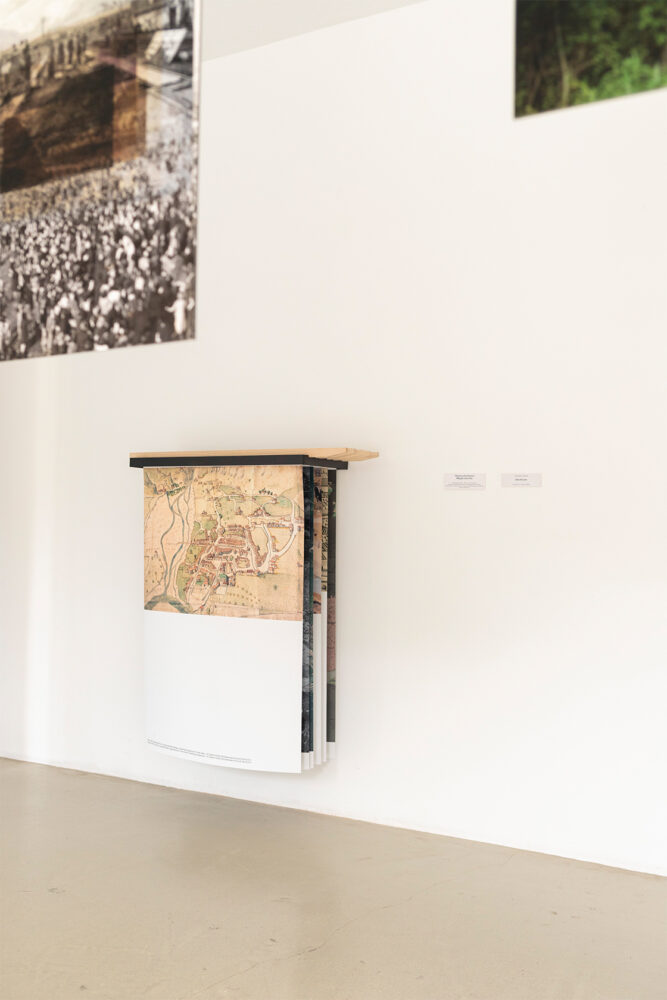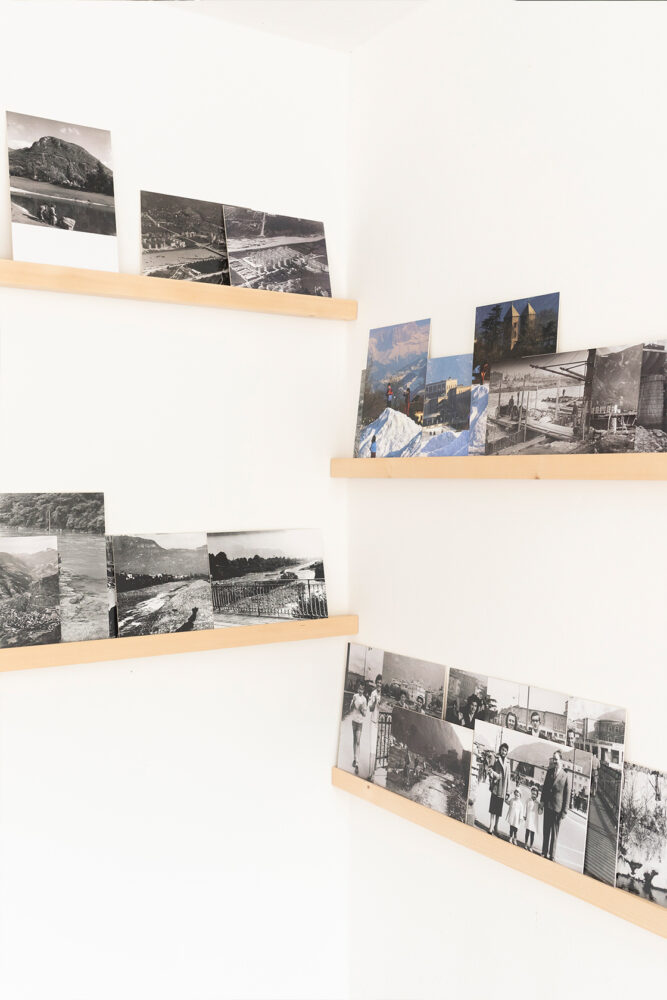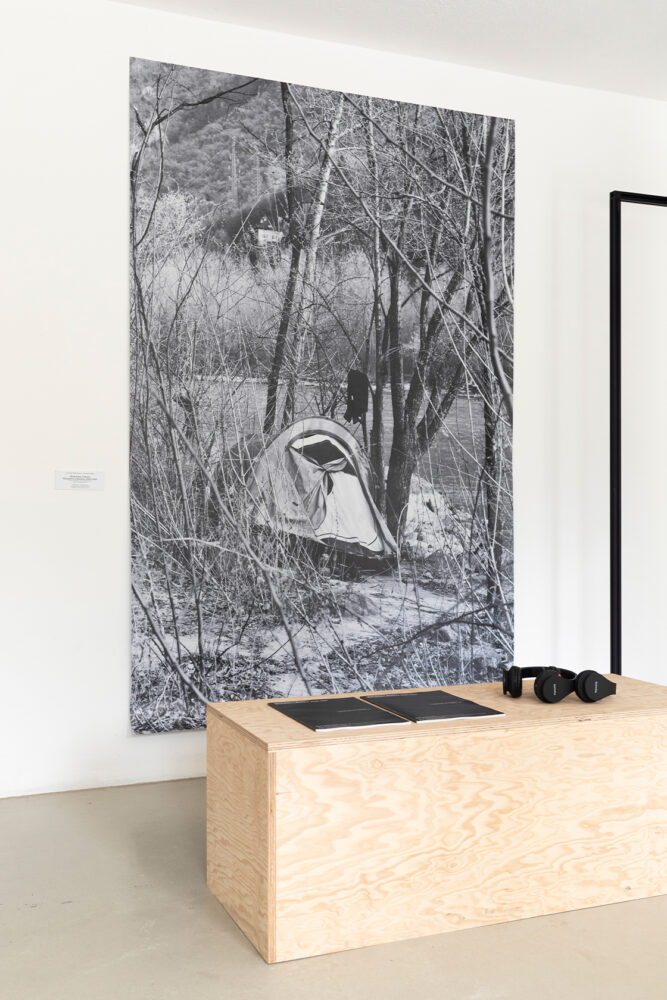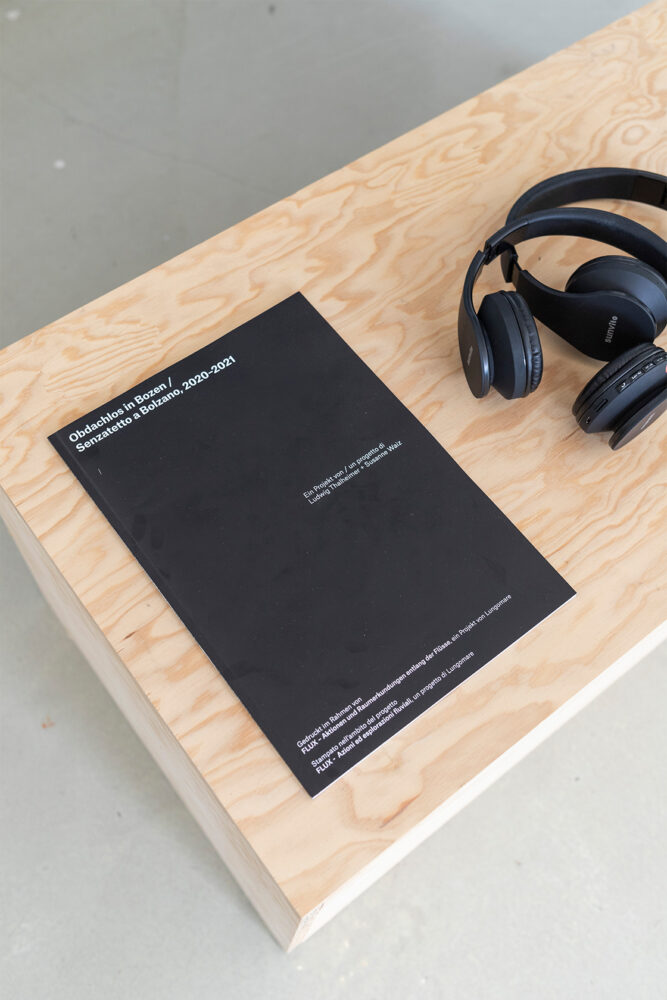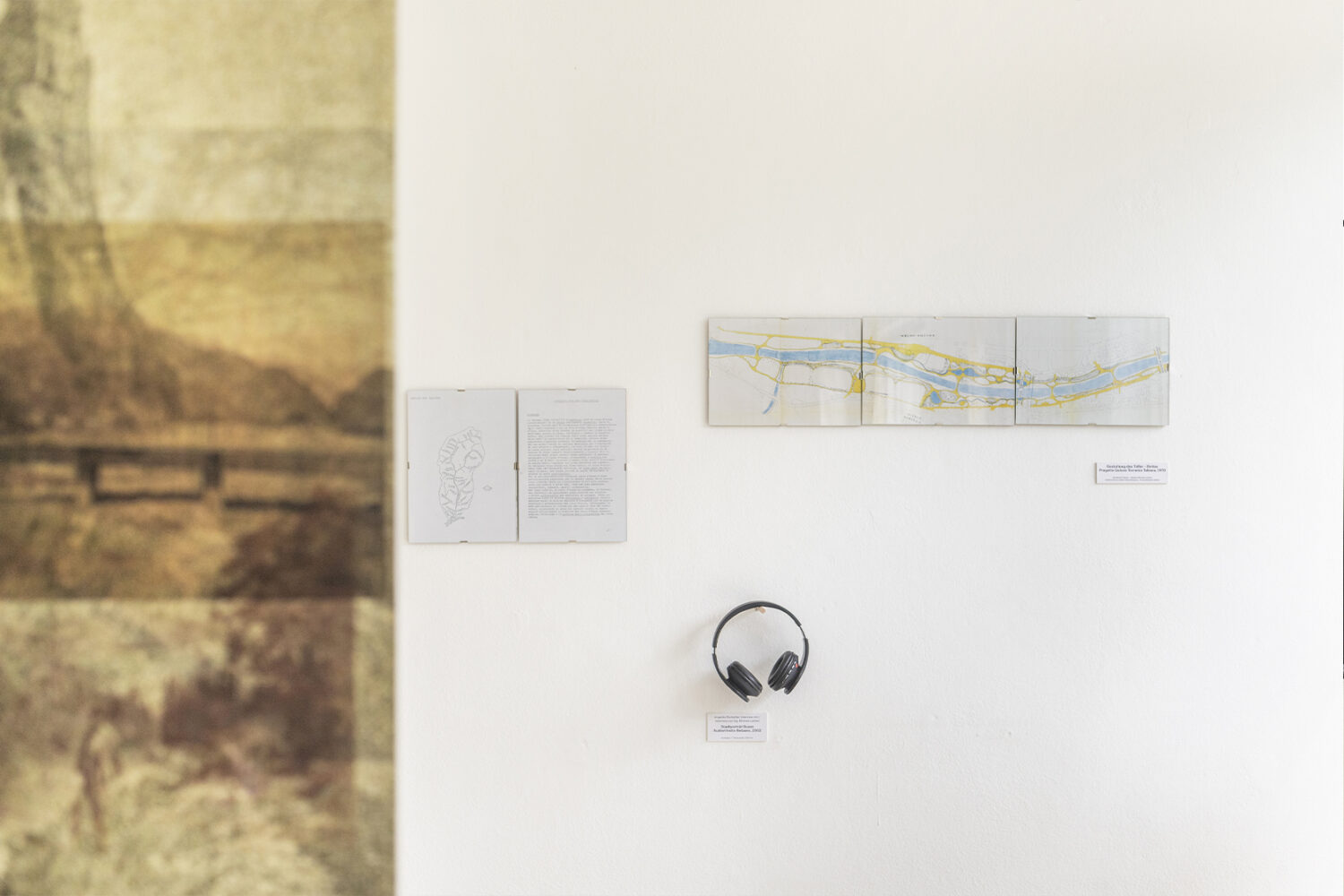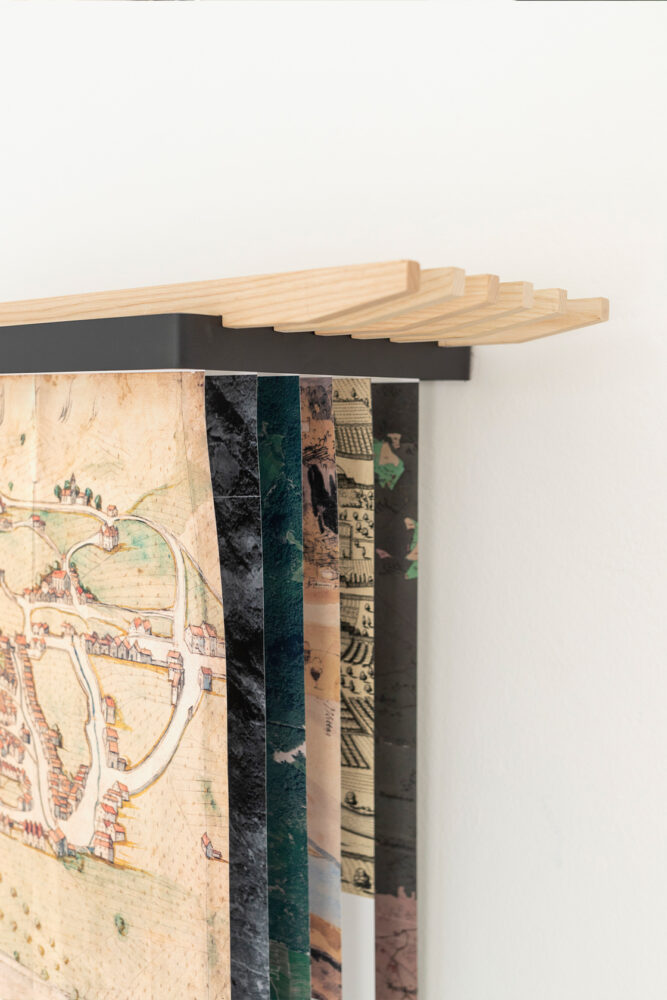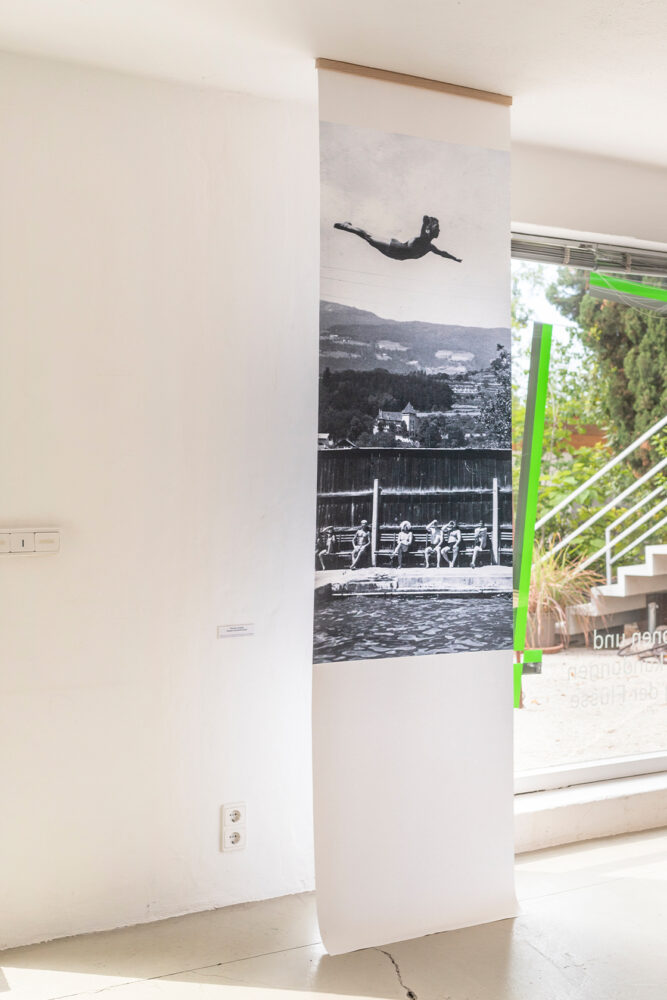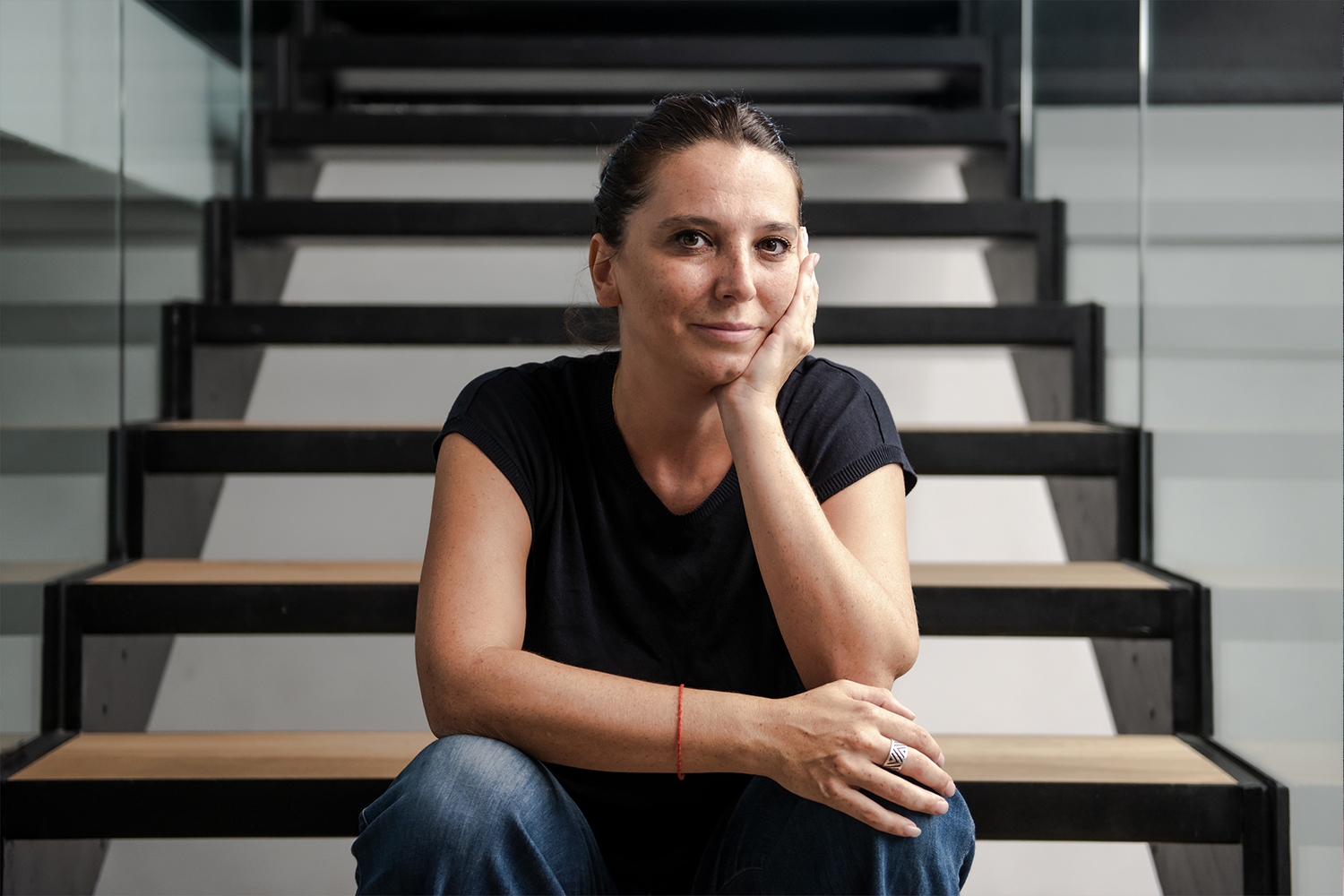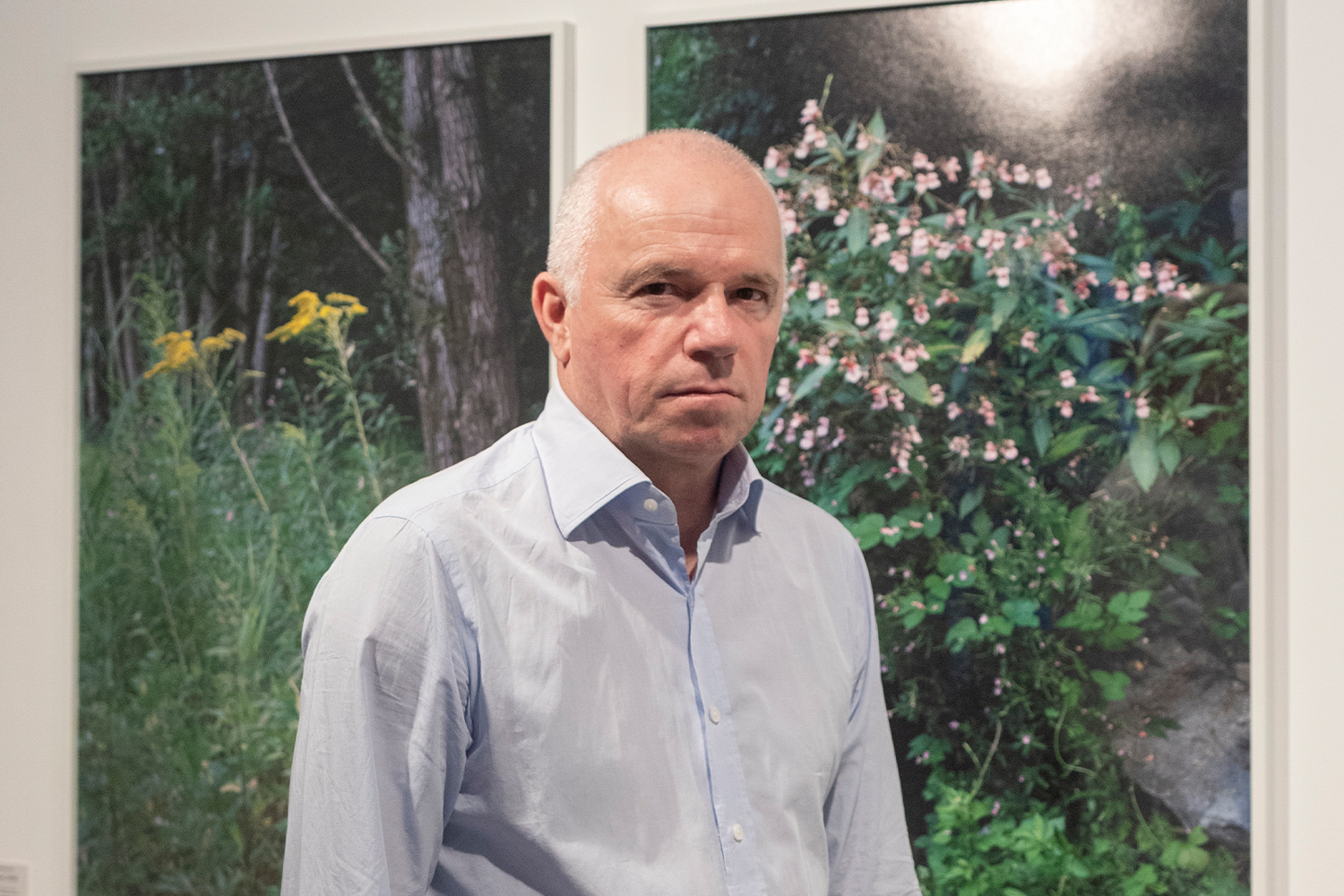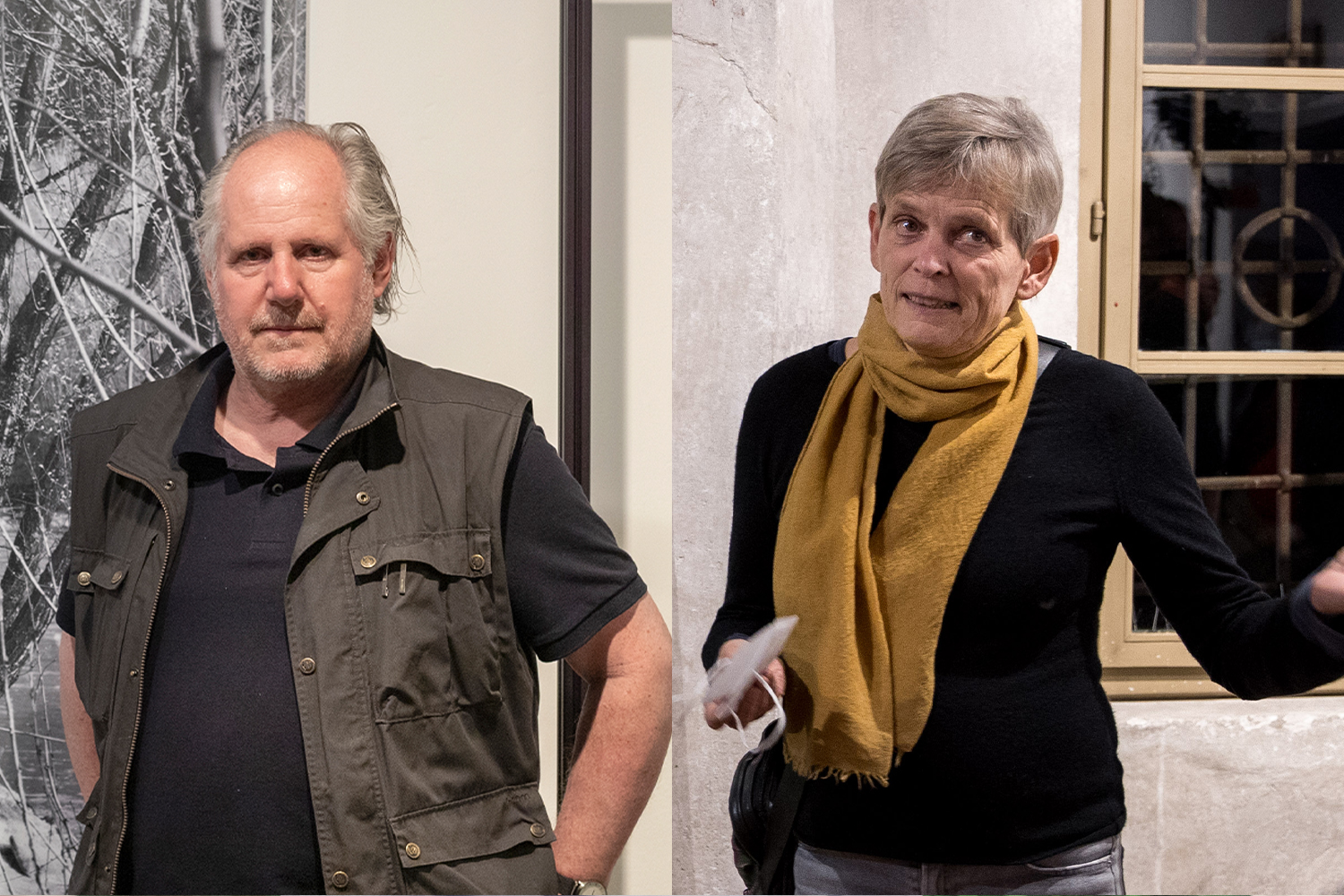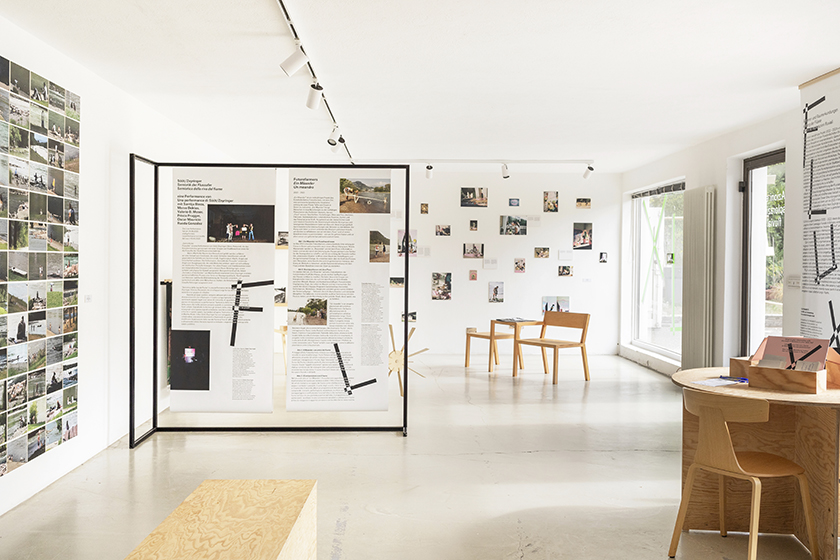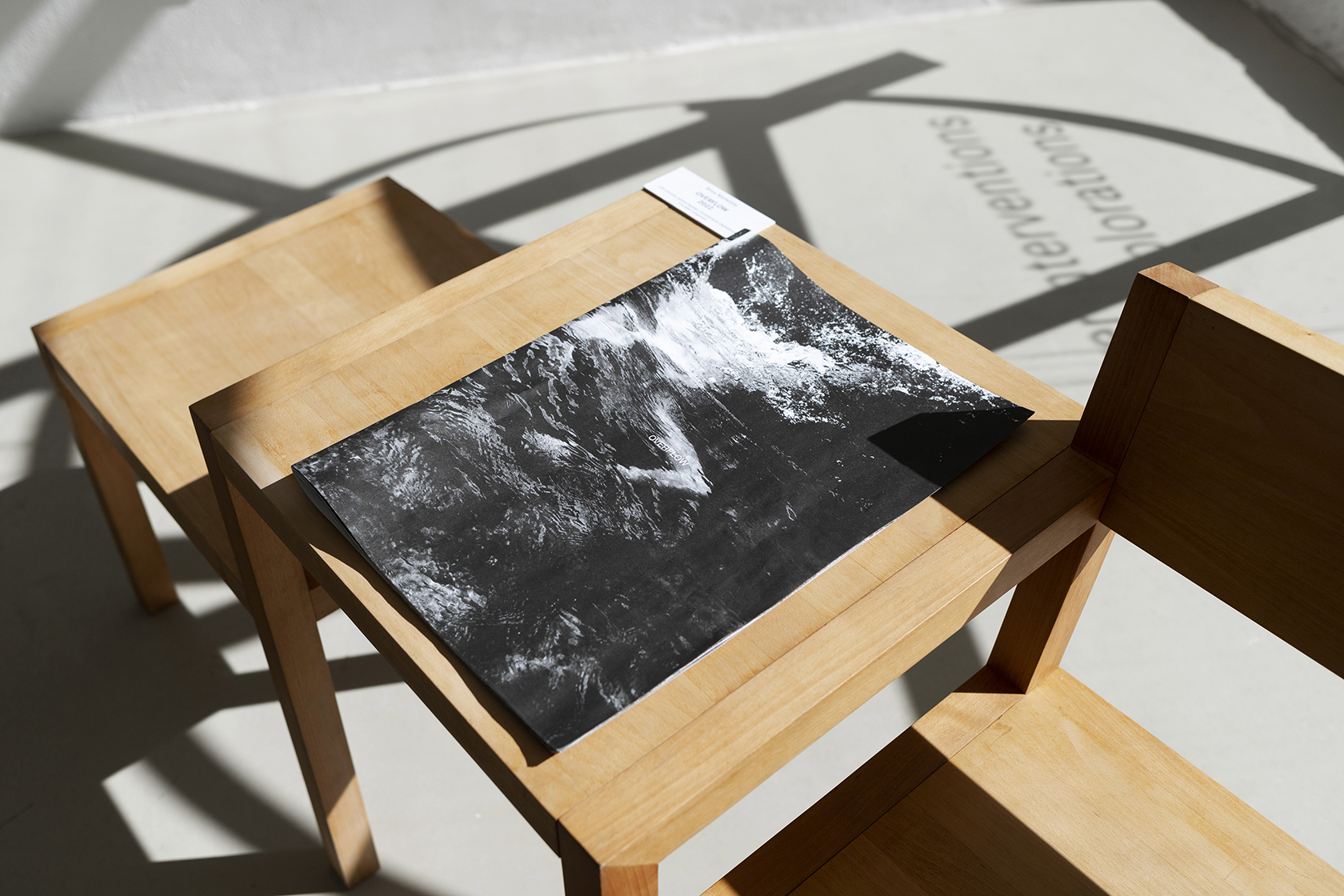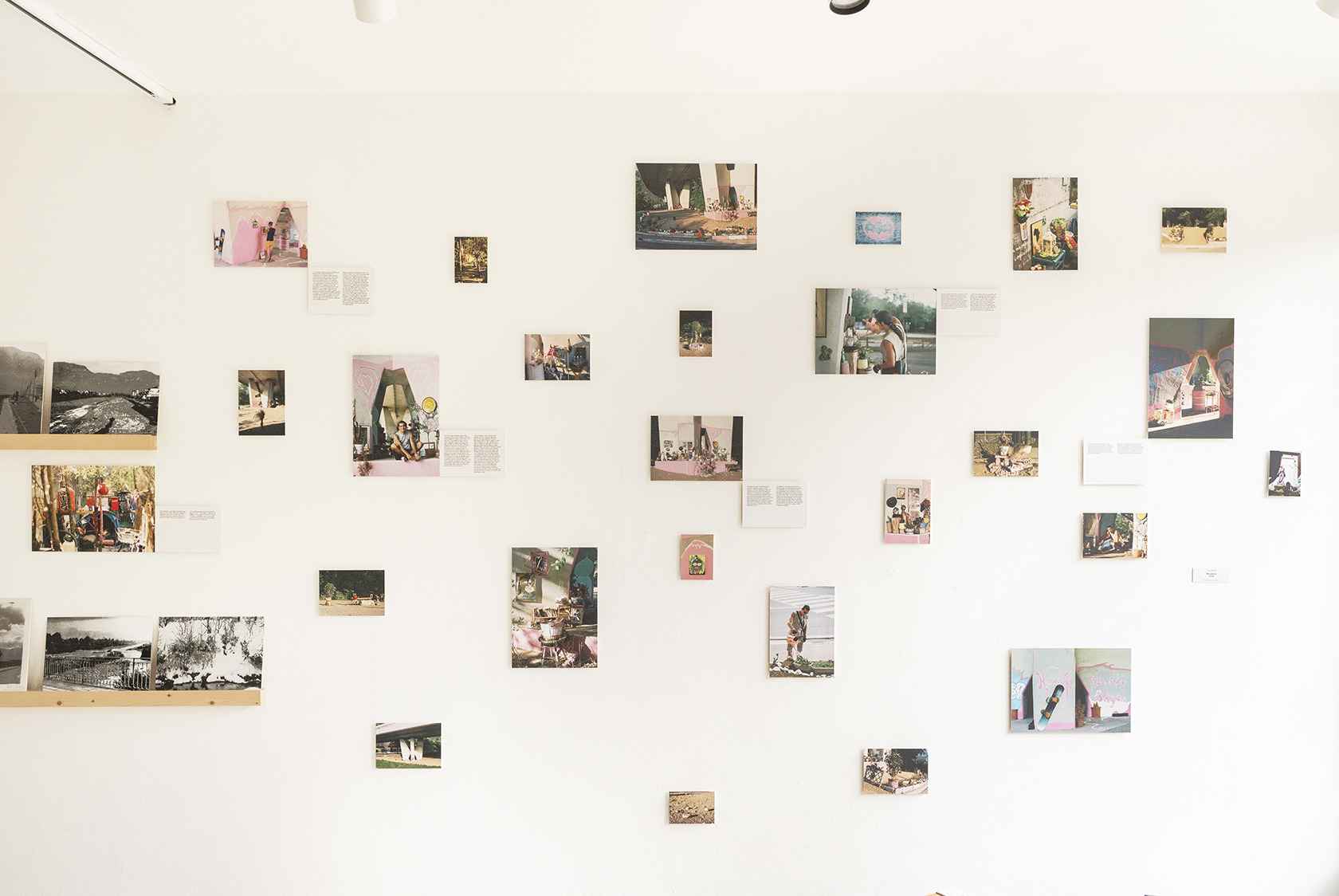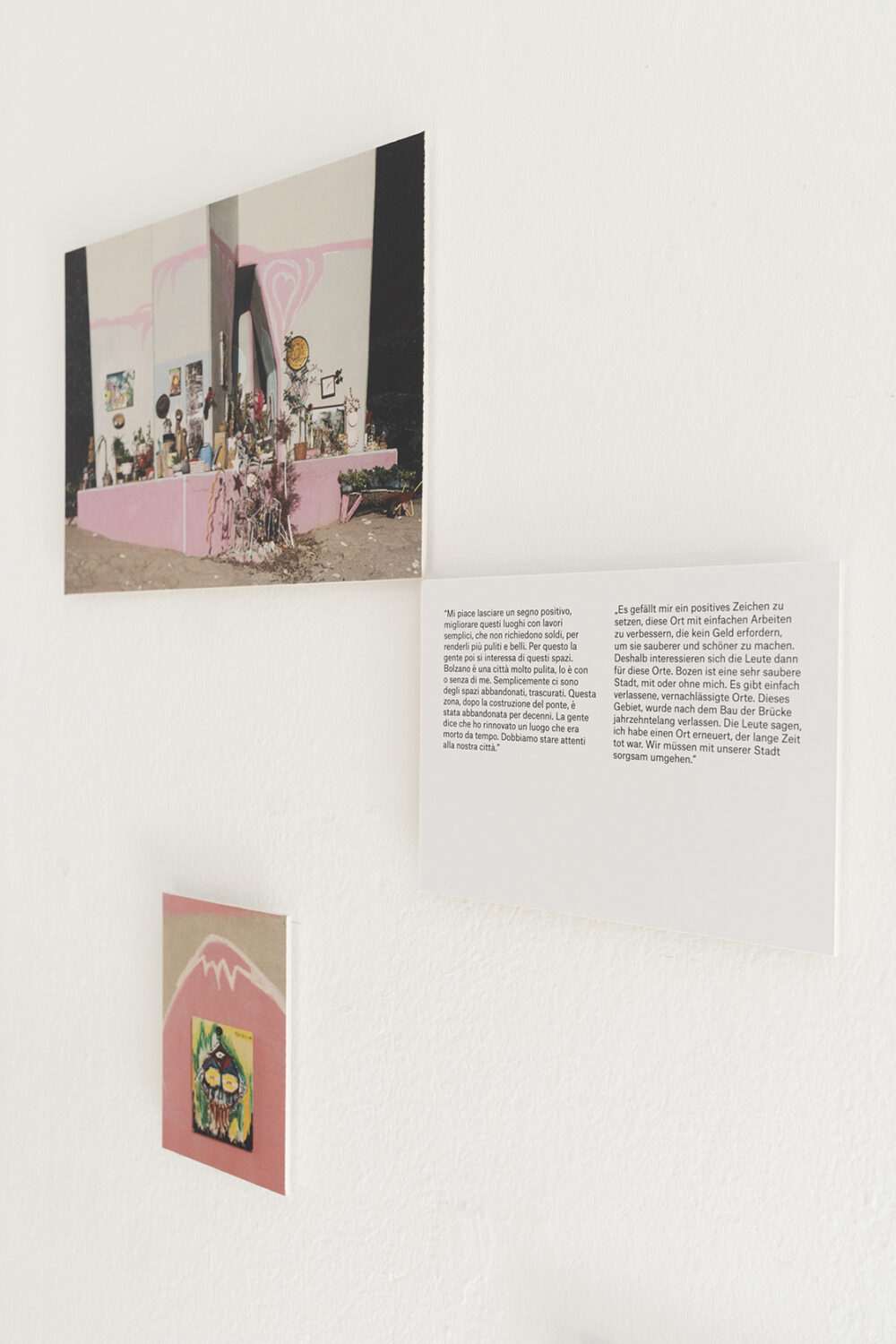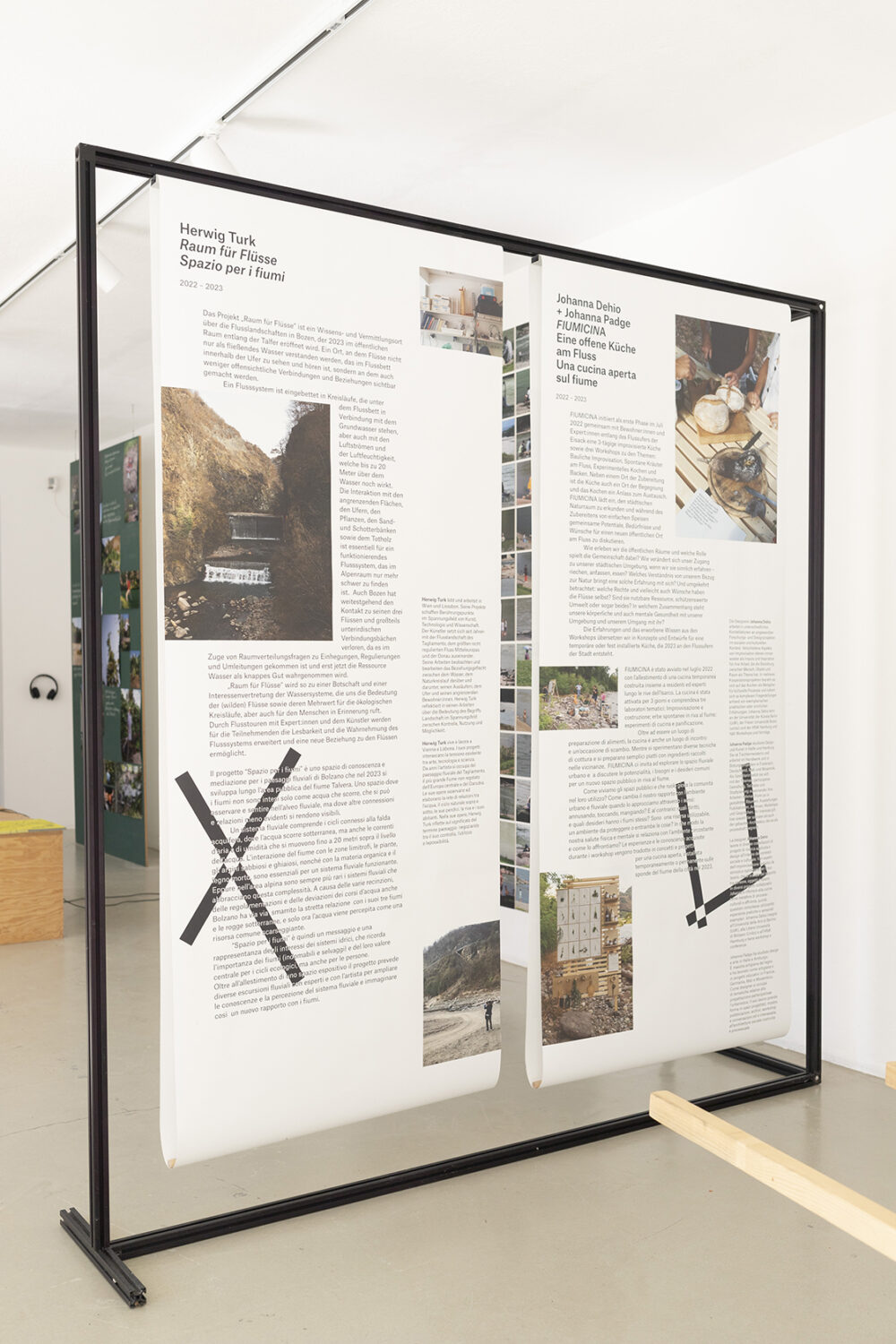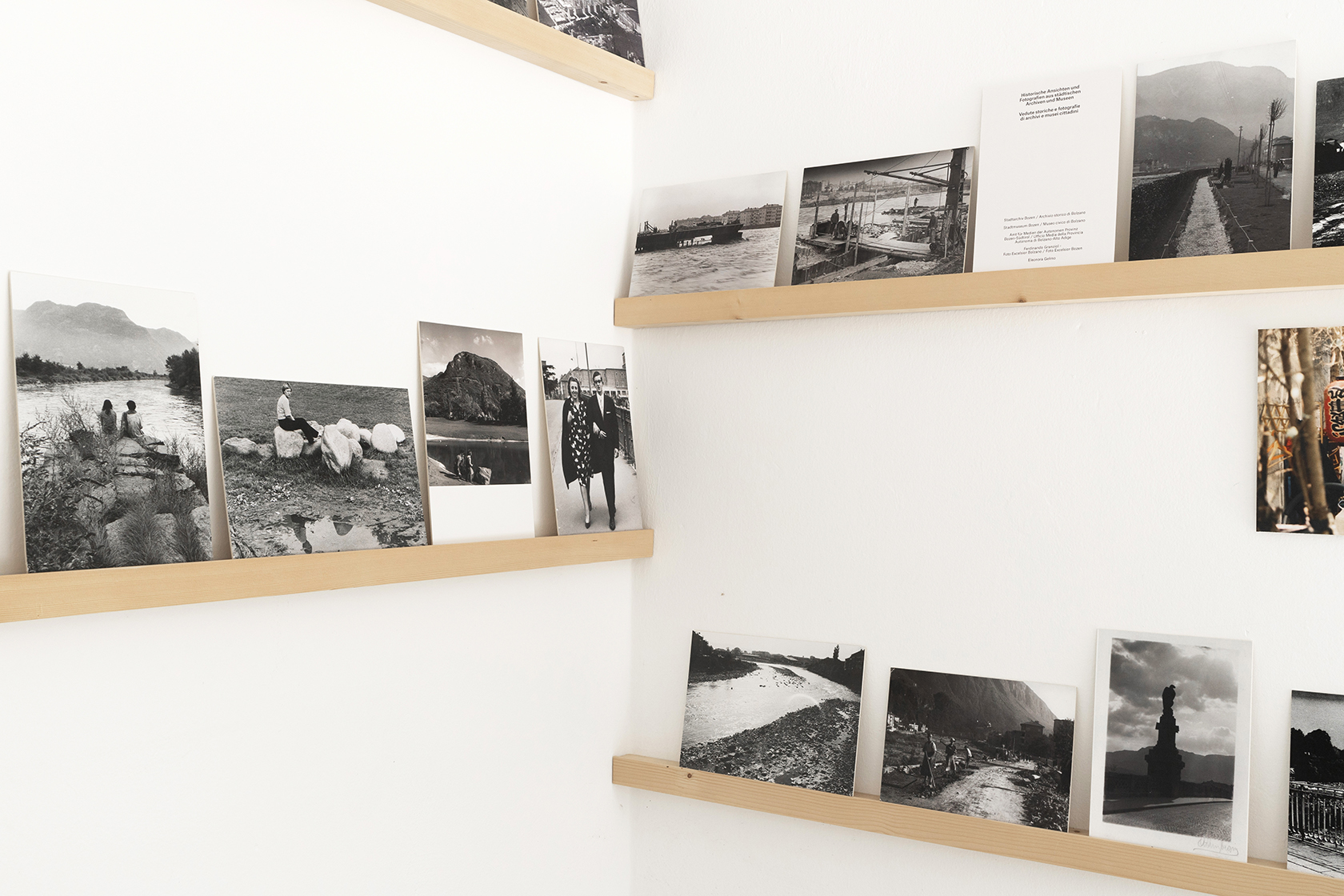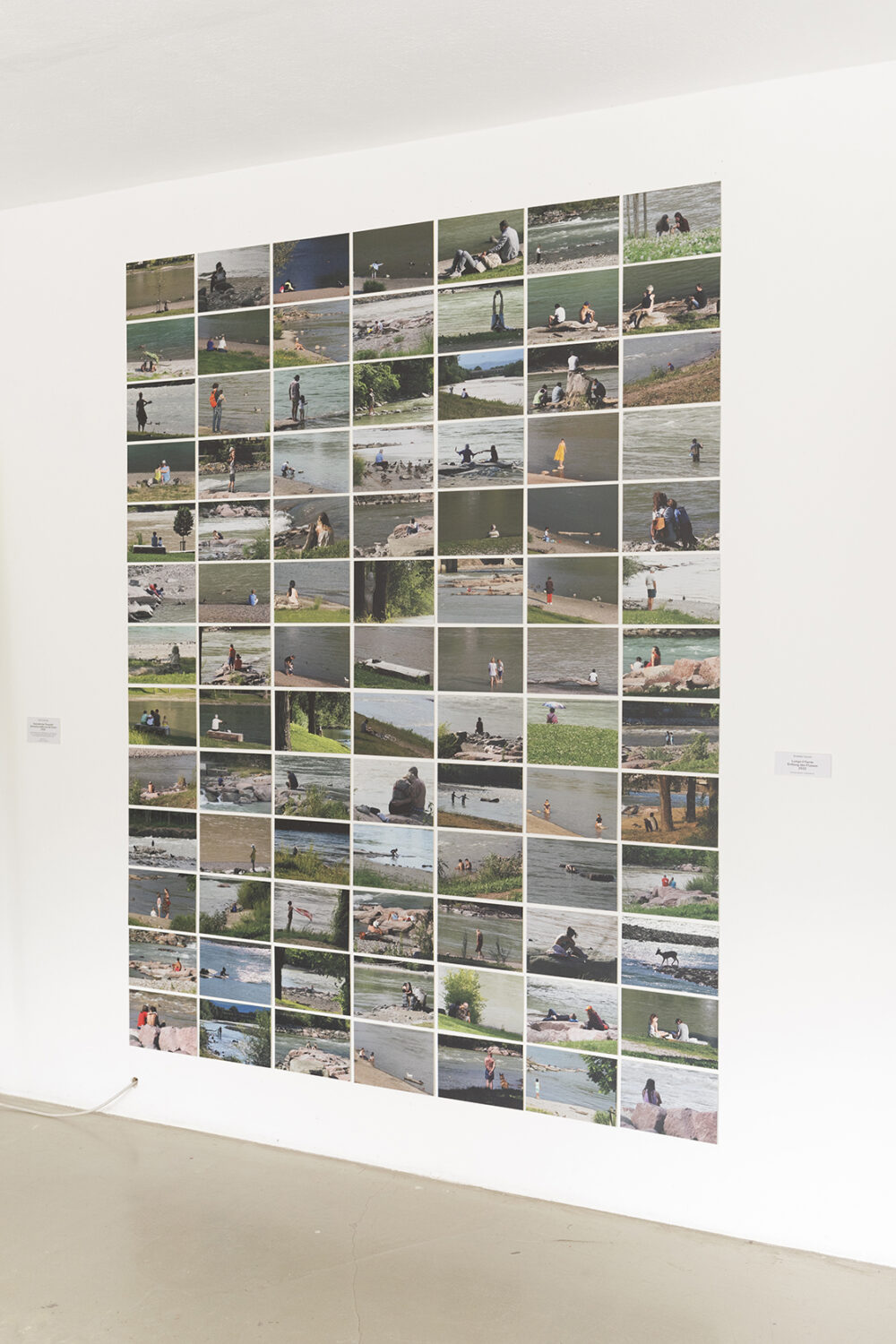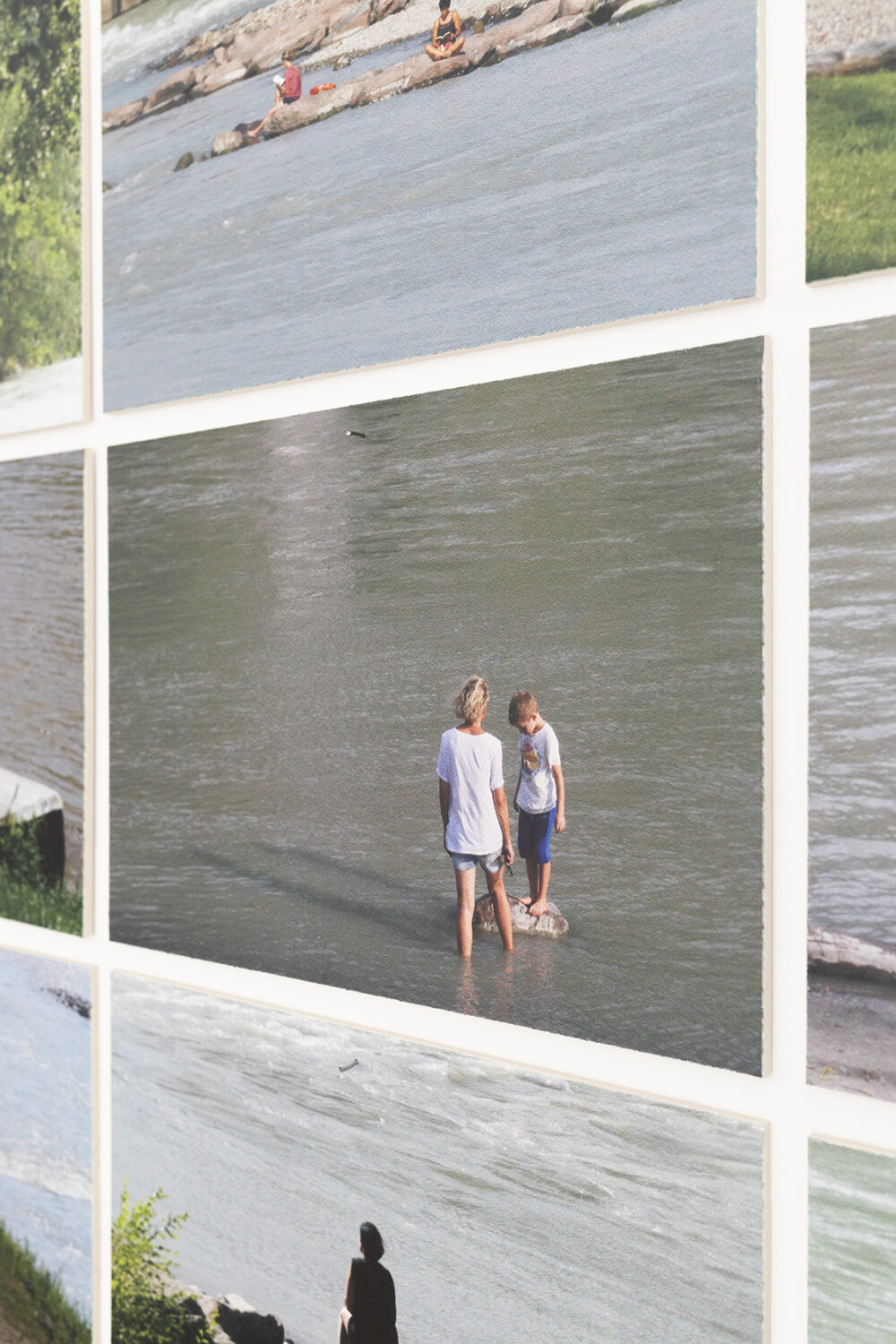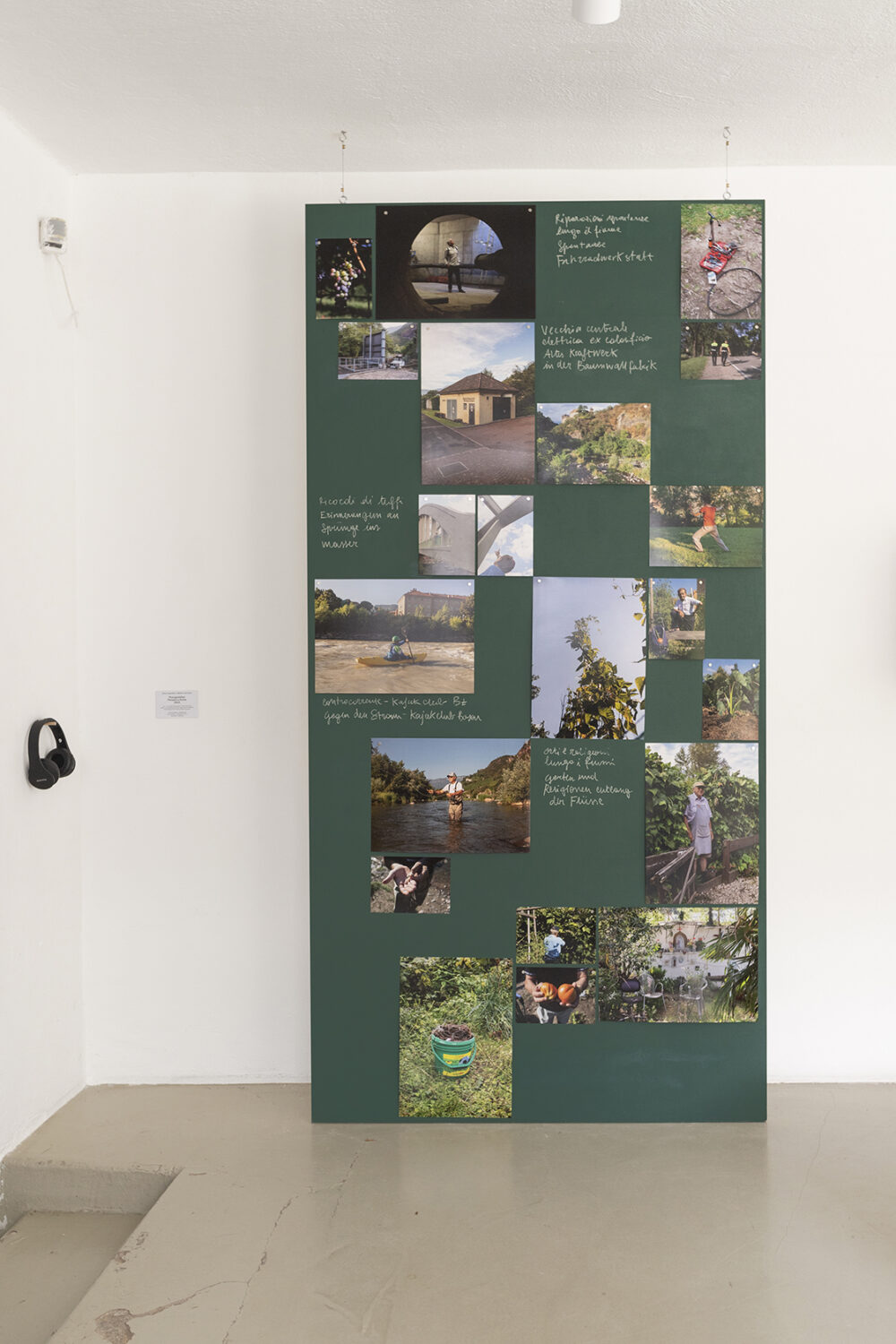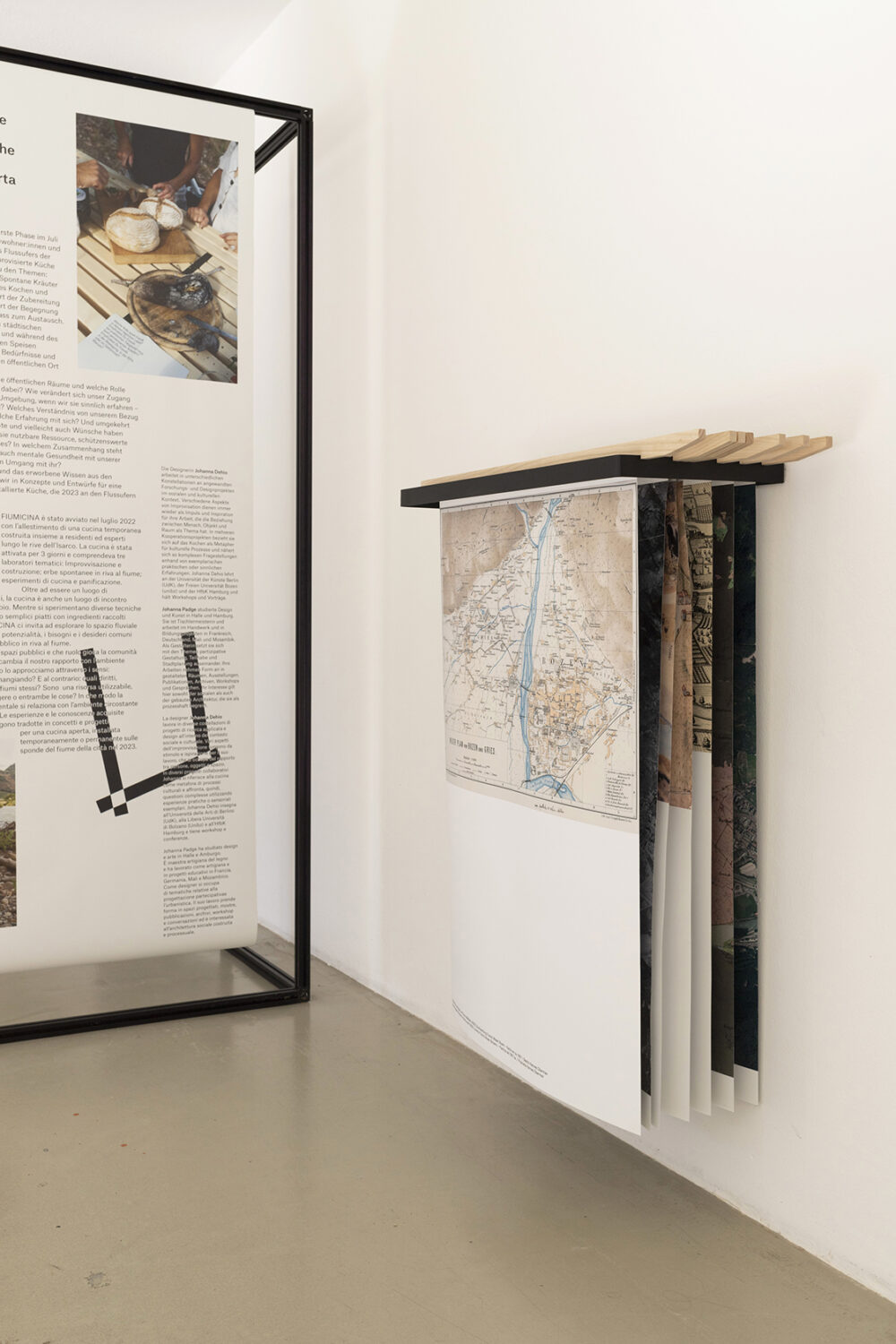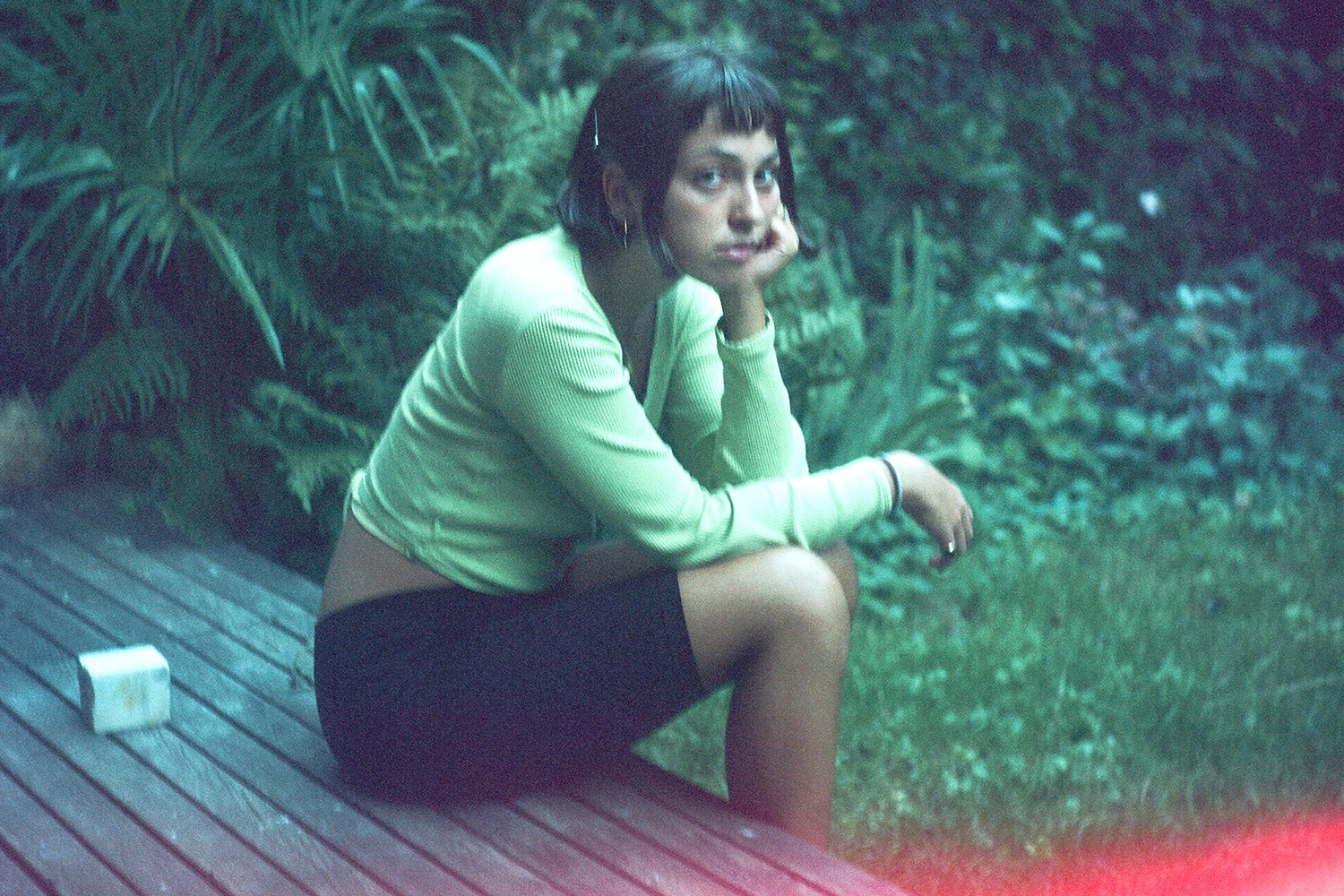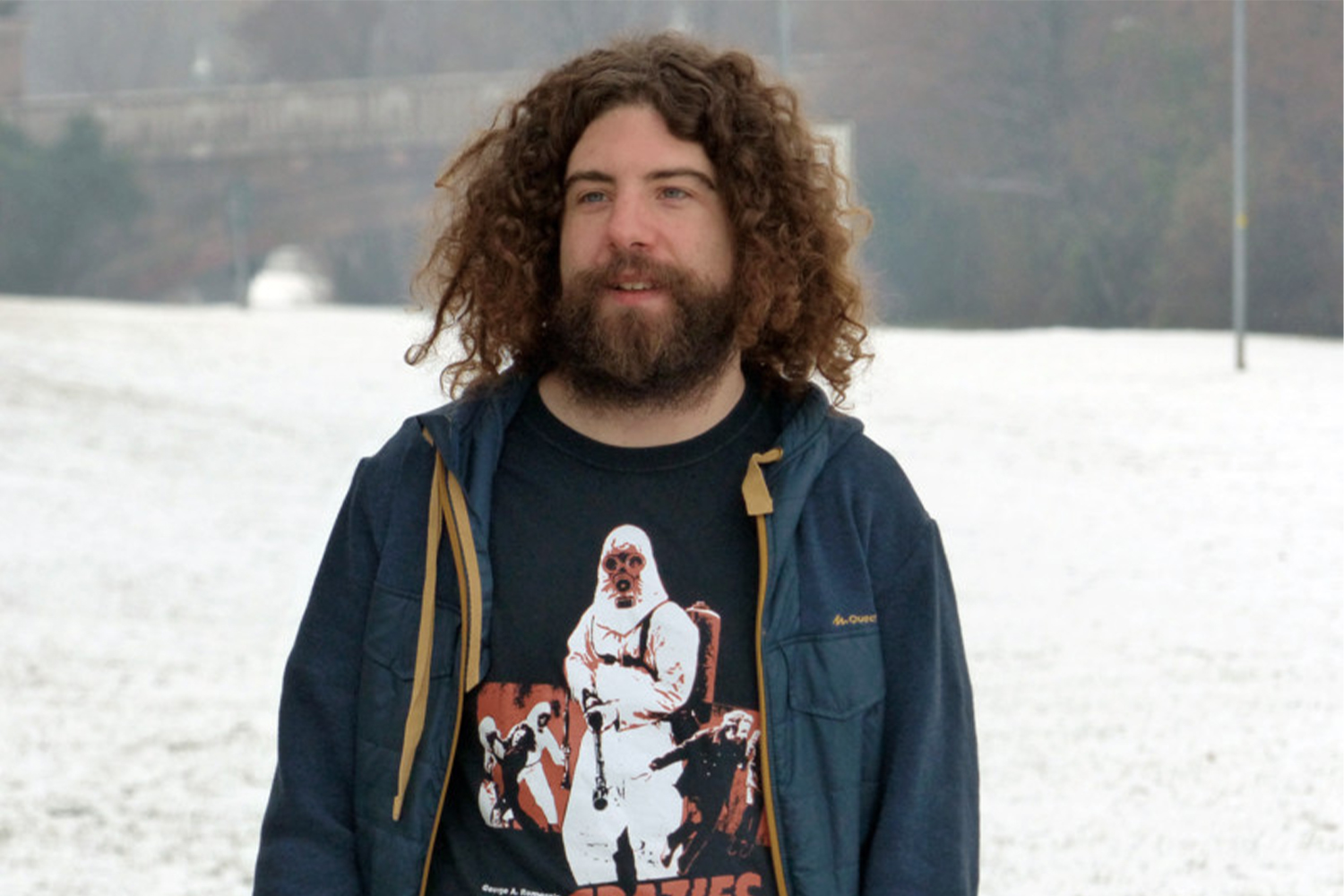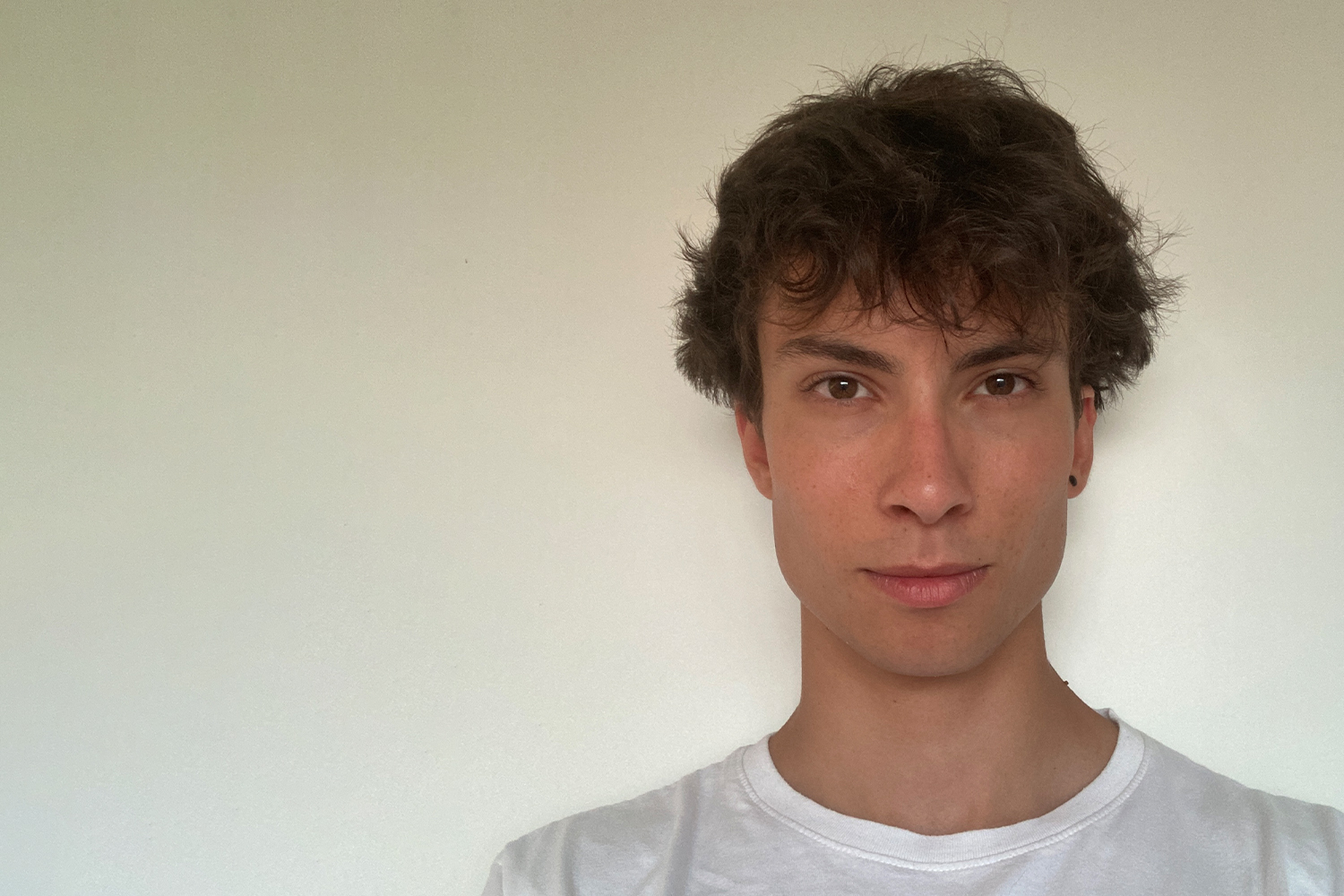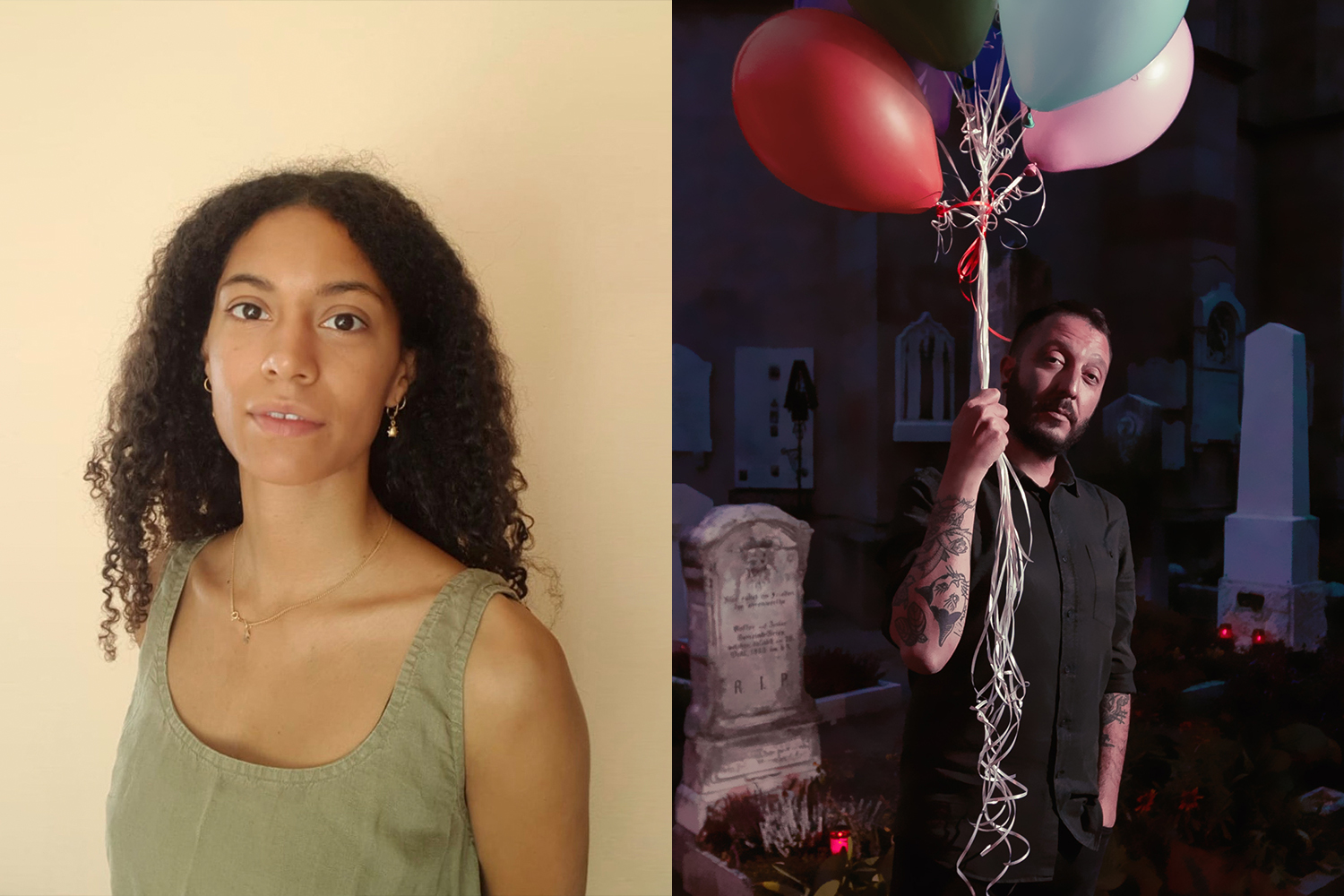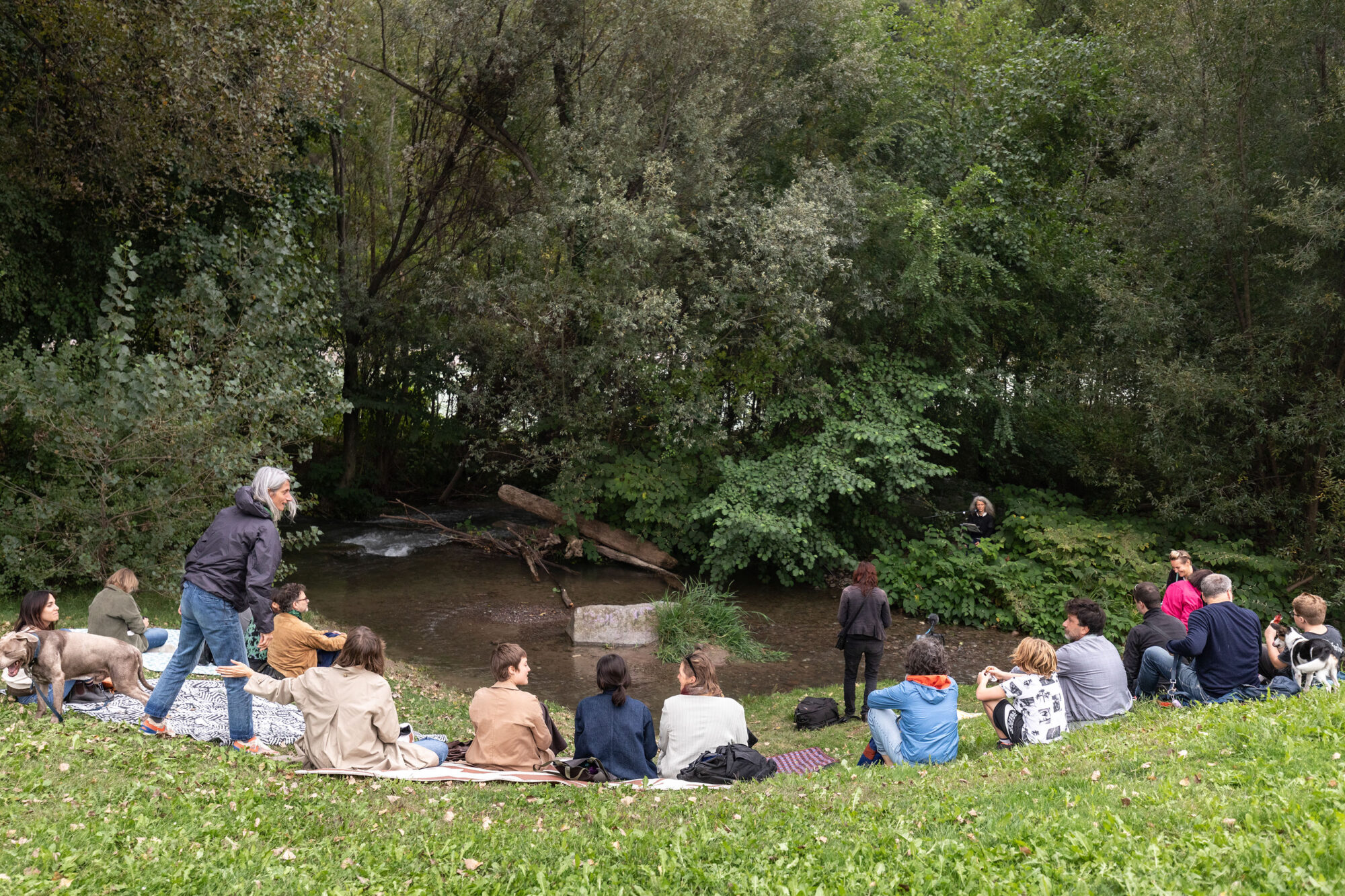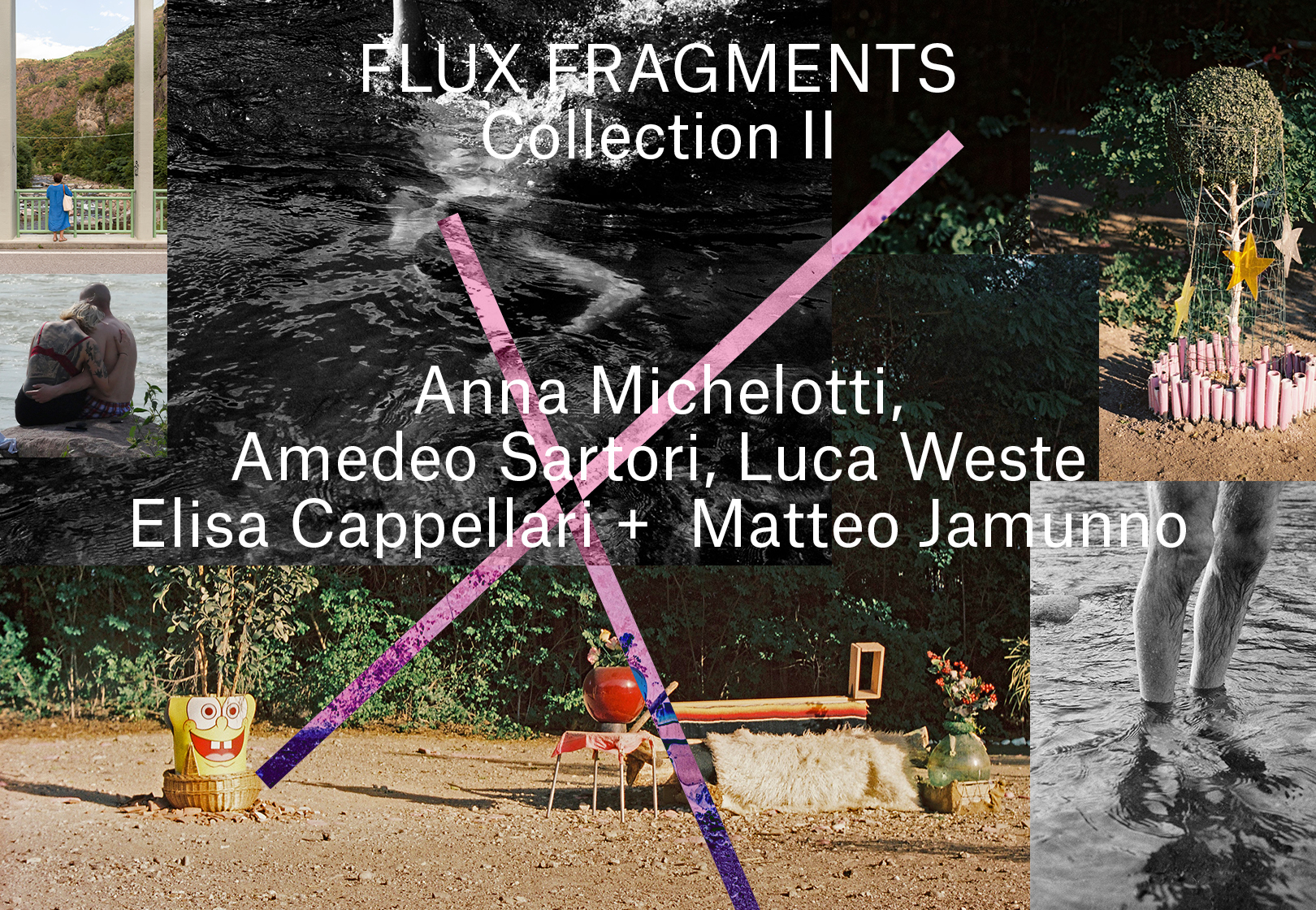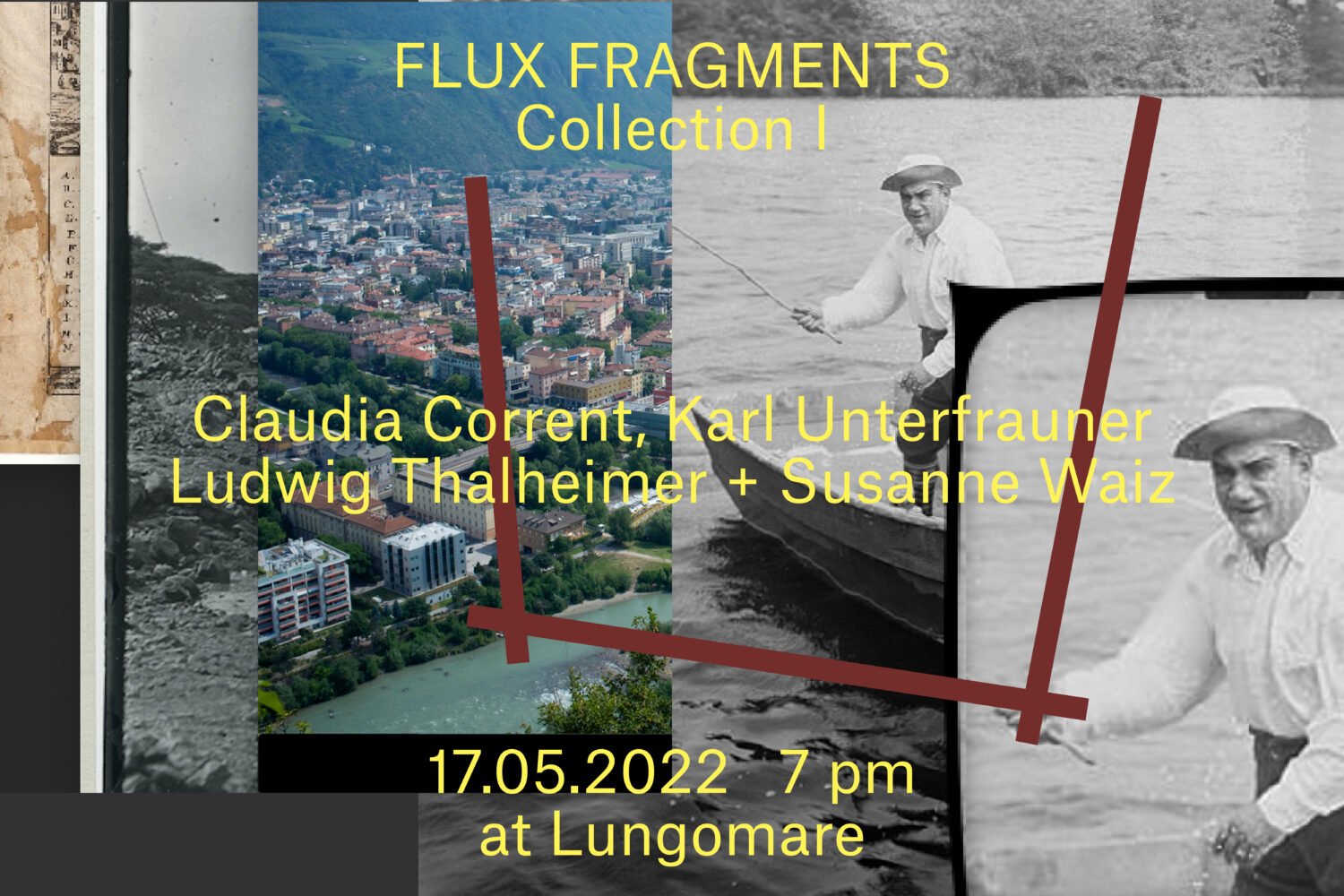FLUX FRAGMENTS
A collection of images and texts in Lungomare
FLUX – River interventions and explorations is a two-year project in which Lungomare will explore the riverscapes of Bolzano in collaboration with artists, architects, researchers, and city residents. Public formats throughout the year will reveal the undiscovered potential of the urban river landscape, with the aim of stimulating a joint production of desires.
A collection of images and texts in the space of Lungomare FLUX FRAGMENTS shows observations and visions made by artists and architects around the river landscapes in Bolzano. The contributions observe everyday life around the river space, tell of hidden places and creatures, and critically examine inclusions and exclusions in the public urban spaces. Some of the contributions were created especially for the FLUX project, others are archival works by artists and architects that we would like to show as suggestions and impulses for further reflection within the framework of FLUX FRAGMENTS. In addition, FLUX FRAGMENTS shows historical images and city maps from municipal archives, film documentations by local filmmakers and invites visitors to answer questions about their relation, memories and experiences with the rivers. A growing archive of images, text and sound tells the story of the city’s river space from the present to the future. FLUX FRAGMENTS accompanies the two-year project with new stories, images and text fragments, which we present in the various COLLECTIONS.
FLUX FRAGMENTS, Collection I
with Claudia Corrent, Karl Unterfrauner, Ludwig Thalheimer + Susanne Waiz
17.05. – 09.09.2022
In the context of FLUX FRAGMENTS, COLLECTION I, Lungomare presents the first photographic collection by Claudia Corrent created for FLUX. In the photo series “Oltrefiume”, the photographer superimposes image fragments, historical city views, snapshots of the past and present and thus interweaves memory and future to sketch new imaginary worlds for the river space. Visible and invisible layers tell of fears and dreams, of non-human creatures that claim spaces for themselves, and of people who continuously change spaces with their actions. Claudia Corrent’s work describes how lived memory and the wish production of today are closely interwoven when we want to shape and change cities.
COLLECTION I also features the photo and sound work “Homeless in Bolzano” by Ludwig Thalheimer and Susanne Waiz. Ludwig Thalheimer’s photos show what we normally don’t see, even though it happens right on our doorstep: people who are forced to live in inhumane conditions, who have also lost their place in society while fleeing. But homelessness is worldwide. In Europe and in a city like Vienna, which is known for its municipal social housing, homelessness takes on frightening forms. Susanne Waiz combines the voices of people who are professionally involved with homelessness into a fictional dialogue.
The photographic work “Neophytes” by Karl Unterfrauner shows three plants along the river Talfer that have settled along the river consciously or accidentally with the help of humans. Together with the researcher and biologist Georg Niedrist (Institute for Alpine Environment, Eurac Research), in 2010 the artist researched these and very many other “immigrant” plants. They came across 2,758 species, about 15% of which have only recently settled in the Alpine habitat. The photographic work shows the various plant species in their natural environment in the Eisack Valley along the Brenner motorway and the Talfer River.
Claudia Corrent (Bolzano 1980, lives and works between Bolzano and Venice) studied Modern Philosophy, graduating with a thesis on the relationship between philosophy and landscape photography. Since 2013 she has been a member of the artistic advisory board of Foto Forum (Bolzano) and Weigh Station (Bolzano). In 2015 she won an artist residency at Camera in Turin and attended a visual arts masterclass at Fabrica. In 2018 she was a finalist at Premio Fabbri and in 2019 she won the Autonomous Province of Bolzano Women Artist Award, the Riaperture Prize, the Capalbiofotofestival and was a finalist for the Combat Prize all in the same year. She teaches photography and designs photographic projects for museums (Mart, Fondazione Sandretto Re Rebaudengo, Festival della Mente di Sarzana, Scuola internazionale di grafica di Venezia). Her photographs have been published in various newspapers and magazines, including Repubblica, Der Spiegel, Art, Courrier International and Die Zeit. She focuses on landscape, private image collections and the collective imagination.
Karl Unterfrauner, born in Merano in 1965. Numerous key galleries and museums such as Museion, Museo d’Arte Moderna e Contemporanea have featured Karl Unterfrauner’s work in the past. In 1994 he spent a studio stay at John Baldessari’s, Los Angeles (USA). To date, his works have been exhibited in Italy and abroad: in Los Angeles, Stuttgart, Frankfurt, Munich, Berlin, Graz, Bologna and Bari. Karl Unterfrauner currently lives and works in Bolzano.
Ludwig Thalheimer (1961, Bolzano) born and lives in Bolzano. He studied architecture and is a self-taught photographer. In 1991 he founded the studio “Lupe” in Bolzano together with Peter Bay. In 1992 he published the volume Erwachsene Kinder. From 1999 to 2002 he was a lecturer in photography at the Accademia di Design in Bolzano. In 2005 he published Undercover (Folio Verlag Bozen/Wien). Between 2015 and 2016 he conceived and conducted the workshop Here I am for immigrants and asylum seekers in Bolzano. In 2018 he published the volume Costa Rica Time Warp Fotohof Edition Salzsburg). Among his solo exhibitions: Karlsruhe (finalist of the Hoepfner-Stiftung competition, 2017), Dresden (finalist of the Portraits competition – Hellerau Photography Award 2017), Bolzano (Cubo Garutti, Museion, 2017), Berlin (winner of the Vom Wegggehen und Ankommen award, Gesellschaft für internationale Zusammenarbeit, Berlin, 2017).
Susanne Waiz, an architecture graduate from Vienna, founded her own studio in Bolzano in 1995. In addition to architectural design, she is dedicated to writing and curating exhibitions, activities that she now fluidly intertwines and reconciles. In 2005 she published for Folio Editore Costruire on the built environment. Interventions on historic buildings, a volume whose theme would later be declined in various concrete projects, including the renovation in 2012 of a house in the San Giovanni in Villa neighborhood in Bolzano. Several exhibitions such as La stalla in disuso, a research on changes in the agrarian world, also resulted in publications and architectural projects. Her achievements include a farm building at the Egghof farm above Bolzano, which was awarded as part of the Nuova Architettura in Alto Adige project 2006-2012.
FLUX FRAGMENTS, Collection II
with Anna Michelotti, Amedeo Sartori, Luca Weste and Elisa Cappellari + Matteo Jamunno
27.09. – 02.12.2022
FLUX-FRAGMENTS, Collection II shows four photographic works that narrate everyday life around the river space. Photography becomes an instrument that relates to the world and creates a series of miniatures of reality. The works deal with the uses of the river and its adjoining green spaces from different perspectives and show people who live, work, spend their leisure time and use the public urban space in many different ways. In the process, life plans are negotiated and contradictions and differences are shown that shape our (co)life in cities. Who is allowed to use public space and who has the right and the possibility to implement their own wishes and ideas? How do young people use public space and what space are they allowed to occupy? What forms of housing and living are accepted and who decides on them? And why do those people who are most in need of public space have the least right to use it? The photographic works along the river landscapes deal with a heterogeneous urban space and outline how a diversity in the use and appropriation of public space is an impulse for new perspectives of solidarity and community.
In her photo essay, Anna Michelotti accompanies young people who appropriate the river space to be among themselves and live an intimate community. Elisa Cappellari seeks out people who not only kayak along the river, but also generate electricity or have planted their gardens in the public river space. Matteo Jamunno undertakes a literary-acoustic journey with these pictures and stories. Along the River by Amedeo Sartori documents public life on the riverbank around Via Trento, while the work Maradona by Luca Weste describes the living space of a young man who has taken up residence under the highway bridge. In this way, a heterogeneous mélange of views emerges about the river and its potential, as well as about its inhabitants and their lives.
Anie Maki / Anna Michelotti (1998, Bolzano) is a Photographer. Her work often focuses on memory and people. She loves to listen and is interested in psychological narratives and stories, in the environment and reality around her, observing relationships, individualities and the connection between past and present.
Amedeo Sartori, aka Zac. As a self-taught filmmaker and stubborn nonconformist, he has been passionate about cinema since a young age, trying his hand at the age of sixteen at making his first short films and increasingly nurturing a great passion for the seventh art in all its forms and expressions. Overlooking a school and work career that had nothing to do (in part) with his passion for cinema, he steadily grew his own artistic sensibility, nurturing a deep interest in the concept of time, memory and movement and investigating what are the reflections related to the relationship between perception and image.
Luca Weste, of Italian-German descent, was born in Bologna, Italy in 1999. He is currently studying design at the Free University of Bolzano, where he is focusing on visual communication. He collects old analog cameras, which with their slowness help him explore the interstices of cities. The shots are driven by an interest in the margins, the often unconsidered places and people, and with these he tries to find and share new stories.
Elisa Cappellari (1993) is a photographer from South Tyrol, Italy – born in Brazil. Her main curiosity arises from how two distant or opposite entities manage to meet. This comes out through photography and textual materials documenting the connection between humans, animals, the wild, and the domestic of her surrounding. Her role as a storyteller plays in between observing and choosing the story; with this constant, she tries to open dialogues about the freedom of the individual being.
Matteo Jamunno (1983) is a singer, musician, poet, writer, podcaster, narrator, graphic designer, performer, born in Naples, Italy. The common thread for him has always been the need to tell stories and convey emotions. Since 2013 he lives and works in Vienna, Austria.
Year
2023 – ongoing
